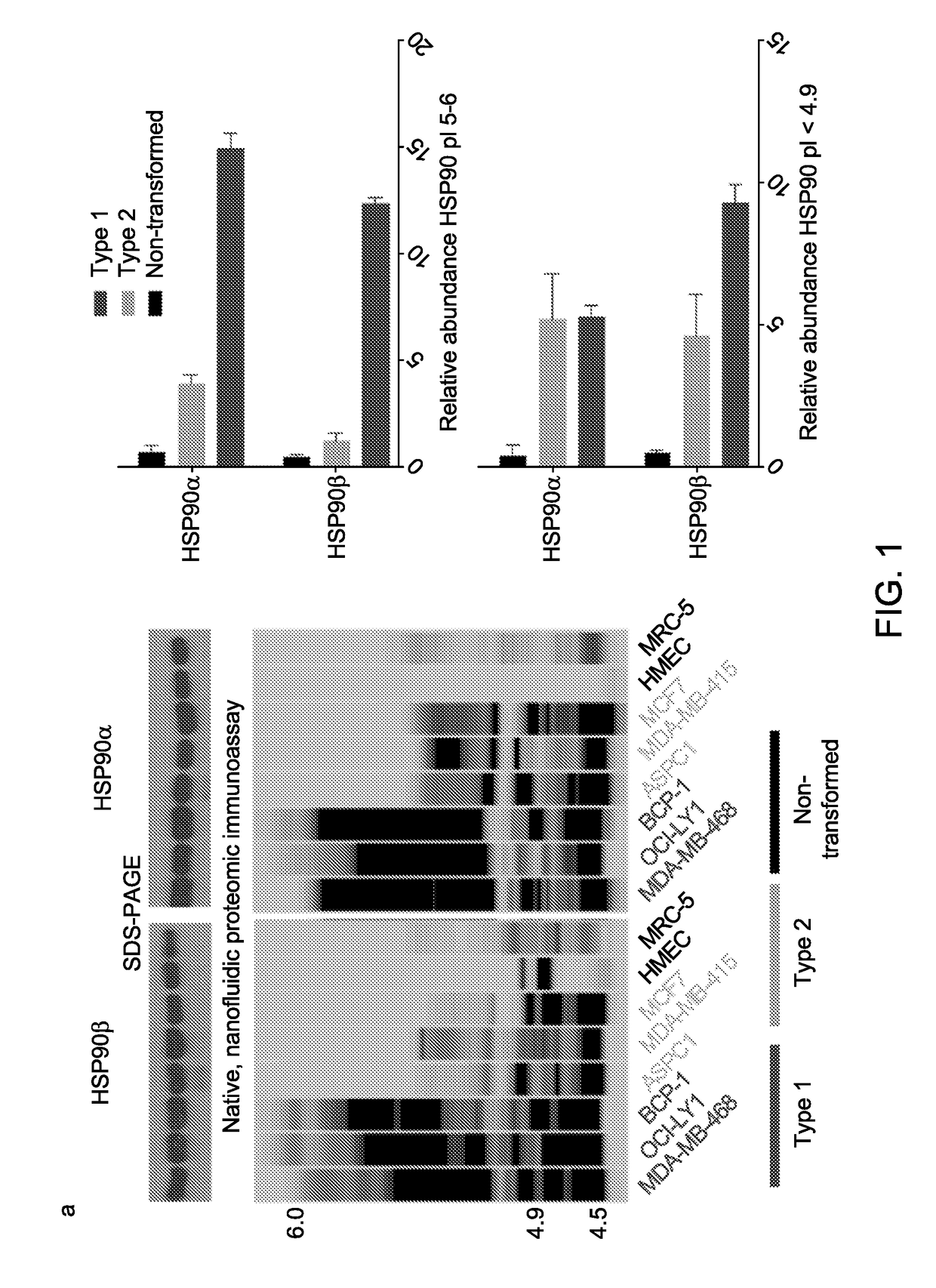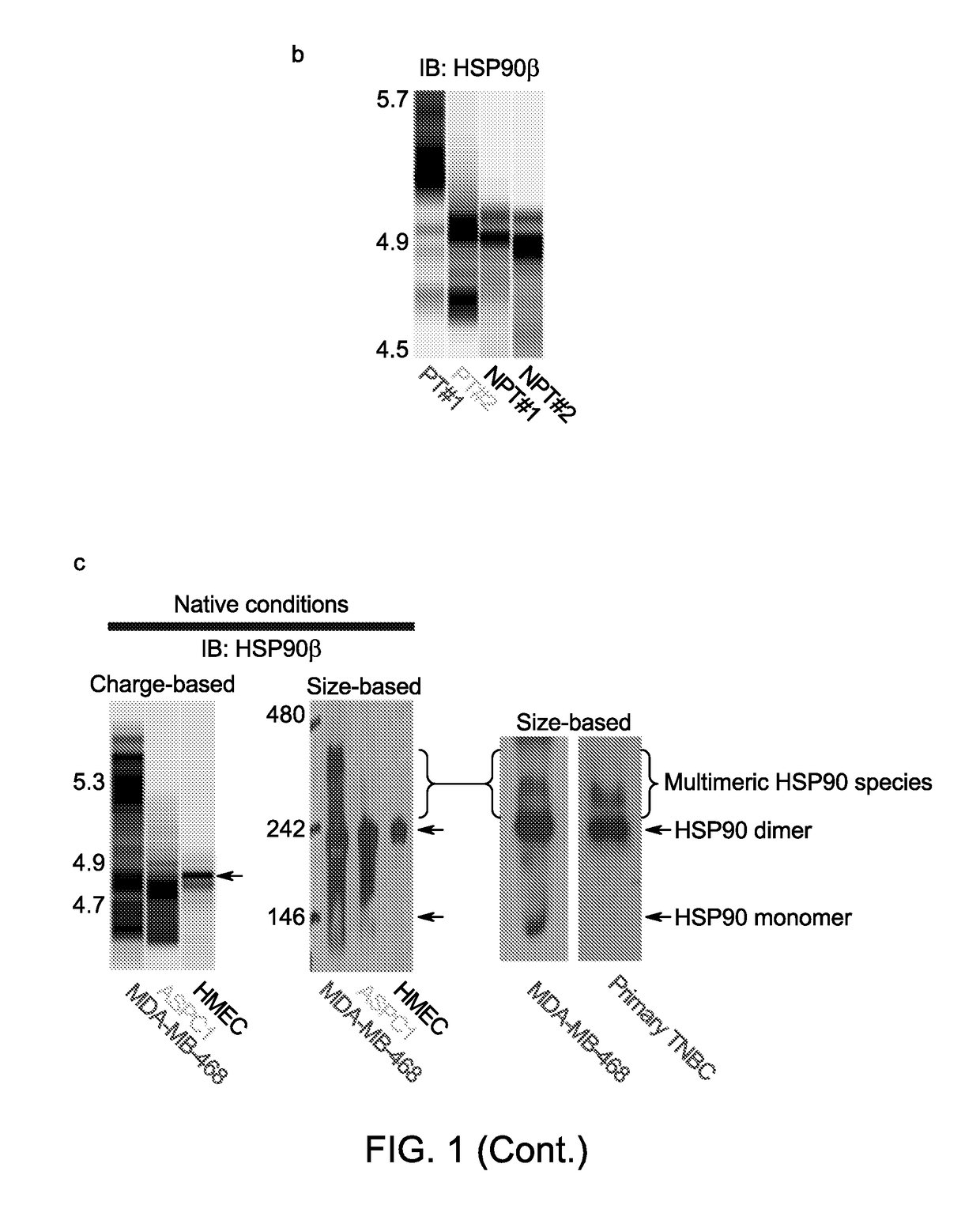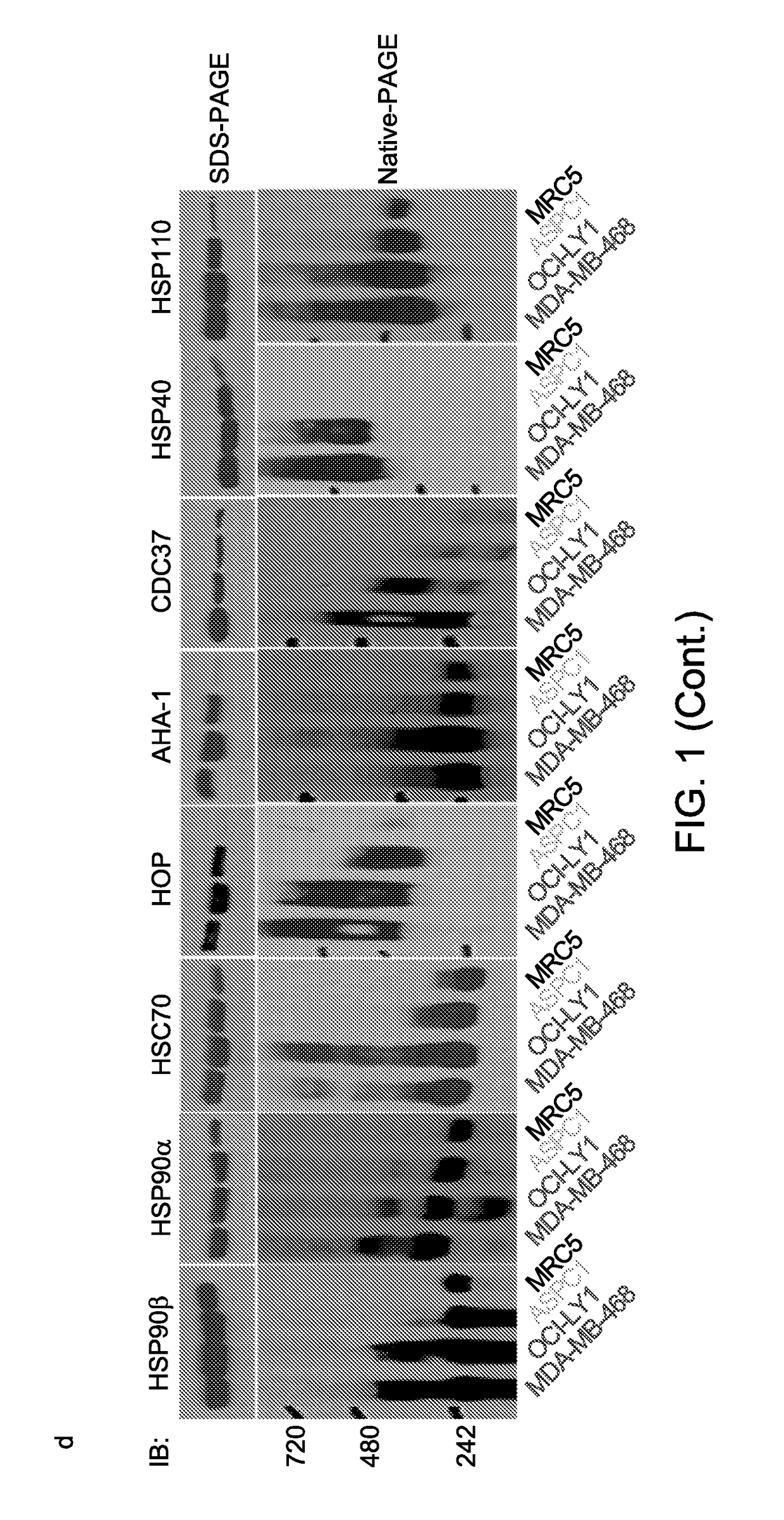Rational combination therapy for the treatment of cancer
a combination therapy and cancer technology, applied in the field of cancer combination therapy, can solve the problems of reducing restraining investigation, and restraining research, so as to increase the sensitivity of cancer cells to hsp90, increase the reliance on hsp90, and improve the effect of proteotoxic stress
- Summary
- Abstract
- Description
- Claims
- Application Information
AI Technical Summary
Benefits of technology
Problems solved by technology
Method used
Image
Examples
example 1
5.1 Example 1
Identifying Chaperome Complexes
5.1.1 Materials and Methods
[0132]Cell Lines. Cell lines were obtained from laboratories at WCMC or MSKCC, and were originally purchased from the American Type Culture Collection (ATCC) or DSMZ. Cells were cultured as per the providers' recommended culture conditions. Cells were authenticated using short tandem repeat profiling and tested for mycoplasma.
[0133]Primary breast cancer specimens. Patient tissue procurement was authorized through institutionally review board-approved bio-specimen protocol#09-121 at Memorial Sloan Kettering Cancer Centre (New York, N.Y.). Specimens were treated for 24 h with the indicated concentrations of PU-H71. Following treatment, slices were fixed in 4% formalin solution for 1 h then stored in 70% ethanol. For tissue analysis, slices were embedded in paraffin, sectioned, slide-mounted, and stained with haematoxylin and eosin. Tissue slides were assessed blindly by a breast cancer pathologist who gauged the ap...
example 2
5.2 Example 2
Identifying Multimeric Forms of Chaperome Members
[0145]We next screened a panel of anti-chaperome antibodies for those that interacted with the target protein in its native form. We reasoned that these antibodies were more likely to capture stable multimeric forms of the chaperome members. Using these native-cognate antibodies, we observed that the more the cell content of high molecular weight HSP90 complexes, the more it was enriched in multimeric forms of other essential chaperome members, such as HSC70, HOP, AHA-1, CDC37, HSP40 and HSP110 (FIG. 1d, bottom). While the quaternary state of the chaperome varied, the overall levels of each chaperome member remained relatively constant (FIG. 1d, top).
example 3
5.3 Example 3
HSP90 and HSC70 Nucleate Multi-Chaperome Complexes
5.3.1 Materials and Methods
[0146]siRNA knock-down. Cells were plated at 1×106 per 6 well-plate and transfected with an siRNA against human AHSA1 (Qiagen) or a negative control with Lipofectamine RNAiMAX reagent (Invitrogen), incubated for 72 h and subjected to further analysis.
[0147]Protein depletion. Protein lysates were immunoprecipitated consecutively three times with either an HSP70 (Enzo), HSC70 (Enzo) or HOP or with the same species normal antibody as a negative control (Santa Cruz). The resulting supernatant was collected and run on a native or a denaturing gel.
5.3.2 Results
[0148]To define the composition of the stable multimeric chaperome complexes in type 1 tumors and investigate the relationship between their components, we either altered the cellular expression of individual chaperome members, namely HSP70, HSC70, HOP, and AHA-1, or captured complex participants using baits specific for HSP90 and HSP70 (see Ex...
PUM
| Property | Measurement | Unit |
|---|---|---|
| time | aaaaa | aaaaa |
| time | aaaaa | aaaaa |
| time | aaaaa | aaaaa |
Abstract
Description
Claims
Application Information
 Login to View More
Login to View More - R&D
- Intellectual Property
- Life Sciences
- Materials
- Tech Scout
- Unparalleled Data Quality
- Higher Quality Content
- 60% Fewer Hallucinations
Browse by: Latest US Patents, China's latest patents, Technical Efficacy Thesaurus, Application Domain, Technology Topic, Popular Technical Reports.
© 2025 PatSnap. All rights reserved.Legal|Privacy policy|Modern Slavery Act Transparency Statement|Sitemap|About US| Contact US: help@patsnap.com



